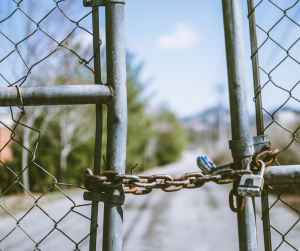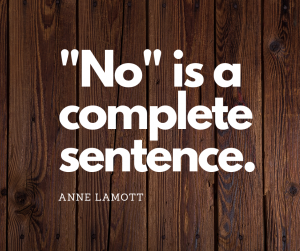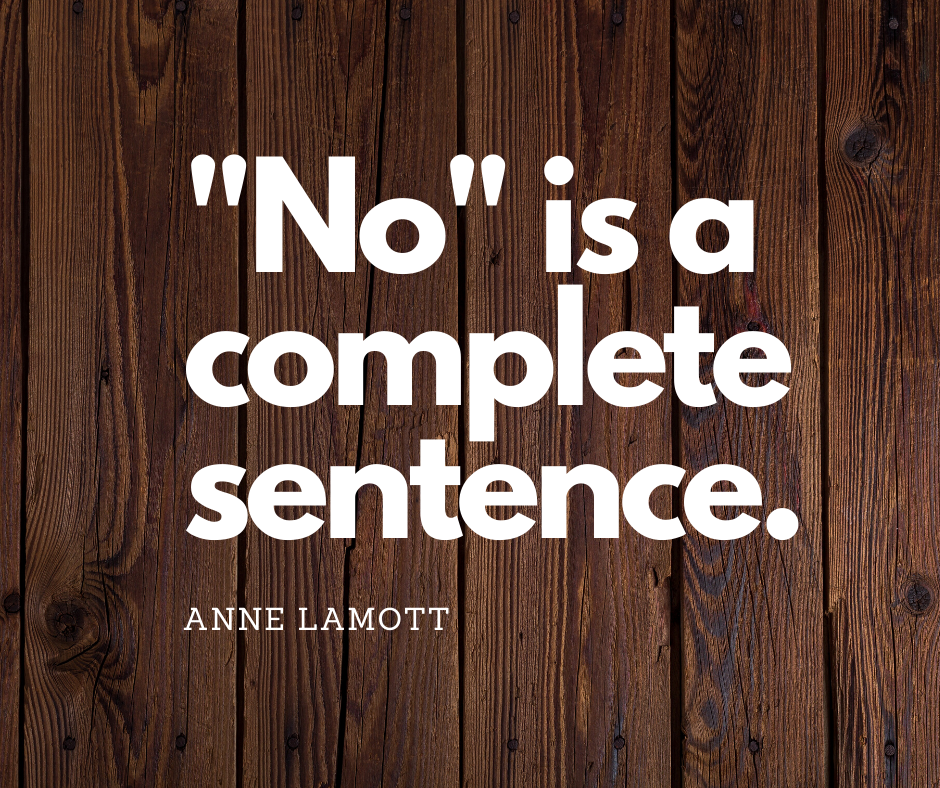
Happy Spring!
Er, um, well … sorta, right?
It’s spring and we all want to be out and about, enjoying the weather, feeling the breeze, watching trees and plants burst through with new growth.
And, yet, given the COVID-19 pandemic, you might not be feeling very spring-y, to say the least.
You might feel closed-in — stuck in your home — restricted. Surrounded by boundaries both real and imagined.

How might this idea of boundaries — which is showing up in a huge way in the world right now with the recommended “six feet of social distancing” — how can the idea — and the reality — of boundaries be a useful symbol for self-reflection? What can this time of enforced boundaries teach us about how and when and why to appropriately draw boundaries in our own lives?
You’ve undoubtedly got at least some time on your hands right now, so why not give some serious — and some playful — thought to the concept of boundaries in your own life.
In your regular work environment, are there ways where you might be overstepping boundaries with coworkers? Perhaps you think nothing of asking a recently married coworker when she and her husband are going to have children. Is this appropriate? Inappropriate? Is there a boundary somewhere in there? — one that recognizes that not all couples want children? Or even if they do, that they may prefer to keep their family planning practices private?
Does a friend frequently call you at the last minute to get together? How does that sit with you? Does it feel good, neutral, negative? Maybe once in a while it’s okay, but perhaps after awhile you feel uncomfortable with the always-last-minute vibe? Is there any desire in you to draw a boundary with your friend? Saying something like: “I appreciate that you think of me, and I love getting together with you, but going forward, I prefer to have more notice on potential get-togethers.”
 Even with our pets — sometimes we need to draw boundaries. I know my cat Boomerang thinks NOTHING of crossing the boundary of pillow space to wake me up at 4 a.m. I’m trying to exercise my right to draw a boundary to at least 5:30 a.m. I’ll keep you posted on how that’s working for me.
Even with our pets — sometimes we need to draw boundaries. I know my cat Boomerang thinks NOTHING of crossing the boundary of pillow space to wake me up at 4 a.m. I’m trying to exercise my right to draw a boundary to at least 5:30 a.m. I’ll keep you posted on how that’s working for me.
Recently, a small group of my friends wanted to meet at one of our houses. Three of us were going to carpool — I had offered to be the designated driver — and we planned to sit six feet apart once we arrived at our friend’s house while chatting, and enjoying coffee together.
As the days grew closer, I kept sending subtle messages to my carpool group about the potential risks of being in such close proximity to one another. I quoted White House Coronavirus Task Force Dr. Fauci’s words about not wanting to sit in close proximity to anyone. I said things like “If you all are uncomfortable, we could take separate cars.” I did and said everything BUT fully disclosing that I was uncomfortable driving together. I wasn’t taking any action to honor my feelings and draw my own boundary. Instead, I kept trying to get them to honor my unstated boundary! I spent three days thinking “I don’t want to get in a car with these women as much as I love them!” Yet, I couldn’t draw the boundary. I kept thinking “They’ll think I’m over-reacting.”
Finally, I coached myself to my senses, remembering this essential fact:
My own discomfort is ENOUGH. My own feelings are ENOUGH. My own boundaries are ENOUGH.

I don’t have to wield Dr. Fauci’s words as evidence; I don’t have to do what makes my friends comfortable. I don’t even have to keep my word to be the group driver if my feelings and comfort level have changed.
That’s what it means to have boundaries: to know that our needs, our comfort zones, our desires, are ENOUGH. Though sometimes it’s appropriate to explain a decision, most often, we don’t need to justify our feelings ourselves — and people quite often don’t even want to know the “why;” they’re just quite fine with the “no.” (In the example I shared above, my friends were completely fine with my decision once I told them my reservations. We all drove separately and had a great time together — six feet apart!)
Sometimes people think or say, “I have no boundaries; I let people walk all over me.” Or they believe, “I’m a people-pleaser and just usually end up doing whatever makes other people happy.” Some of us say, “I’m easy-going; it doesn’t matter enough to make a big deal out of something.”
In most cases though, I think it’s true that we all have values and concerns that are in essence our “boundaries.” We may not recognize them as boundaries because we’re so accustomed to ignoring our own wants, needs, desires, and values.
Changing or creating healthy boundaries isn’t something that happens overnight.
The first step is simply being aware of moments or experiences where you feel uncomfortable in your mind or in your body after an interaction with another. Maybe it’s a slightly queasy feeling in your gut after an interaction with a friend. Perhaps you regularly come home with a headache after spending time with a certain family member. Maybe your jaw always aches after having to work with a specific coworker. Or you feel exhausted after a date.
These may be signs that your body is trying to tell you that a boundary has been pushed or crossed.
Or perhaps you hear yourself making a justification to yourself: “It’s not a big deal.” “It doesn’t matter.” or “Well, if it makes him/her/them happy, I can put up with it.” Notice those moments. This is your mind trying to dismiss what your own body is telling you.
Just like noticing the birds building nests and smiling with pleasure at the lush green of new leaves on trees helps strengthen our love and protection for nature, noticing our feelings that come up around our experiences and interactions with others is the first step in strengthening our appropriate boundaries in our human relationships — which in turn, strengthens our ability to love and protect ourselves.


